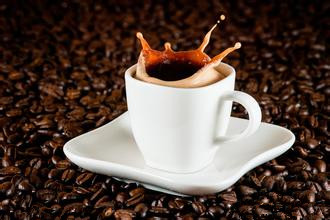Coffee Bean roasting knowledge Coffee Baking Dictionary
In this chapter, the author introduces the relevant words and descriptions that will be used in roasting and tasting coffee. These professional words are like passwords for coffee lovers to communicate with each other, and may not be required, but the description of these words has a considerable positive effect on the improvement of coffee appreciation. Here will be a collection of Chinese and English, I hope to help readers to use.

Acidity/acidy acidity
Acidic acidity
Agressivery flat taste's strong nose-punching hollow taste
Aroma wet aroma
Astringency astringency
Astringent is astringent.
Baggy sack flavor
Baked baked flavor
Balance equilibrium degree
Berry-note acidity has berry flavor acidity.
The characteristic slightly bitter taste of deep baking in bitterish
Bittersweet turns bitter to sweet / sweet in bitterness
Bland is empty and boring.
Body/mouthfeel viscosity / mellowness / taste
Bready smell of toast
Brisk is lively
Bright bright
Buttery is like yellow cream
Caramllike quality is close to the texture of caramel
Charred burnt smell
Chocolaty Chocolate
Cinnamon roast cinnamon baking degree
Clean is clear.
Clean balance's clear sense of balance
Complexity complexity
The smell of rotten food in composty/rotten
Depth/dimension depth / hierarchy
Earthy wet soil taste
Dry has a dry taste.
The taste of faded declines
Fatter has a higher sense of fat.
Fermented overfermented flavor
Flat without aroma is empty and without fragrance.
Floral with floral scent
Fruity fruit aroma
The full consistency of full-bodied
Grassy grass smell (fishy smell)
The taste of grainy millet.
Green has a raw flavor.
Gritty sandy / sandy rough
High-toned high profile
Idiosyncratic roast taste defective baking flavor
Lean is non-greasy.
Light-bodied tastes thin.
Low-key low-key flavor
Malty malt flavor
Mellow is delicious
Musty smells moldy
Oily is oily.
Overwhelming is wild and unruly
Irritant flavor and taste of pungent/pungency
Red-wine-like has the texture of red wine.
Rich rich
The reverberating acidity of ringing aidity
Rounded/rounder is round and round
Sharpness sharpness
Smooth is smooth and smooth
Sour stinging sour taste
Soft tastes soft
Sugary sweetness sugar sweetness
Sweet is sweet
The destructive defective flavor of tastes of idiosyncrasy
Tectre texture
Thin is thin
Watery is as thin as water
Wild wild flavor
Aroma of winey wine
Important Notice :
前街咖啡 FrontStreet Coffee has moved to new addredd:
FrontStreet Coffee Address: 315,Donghua East Road,GuangZhou
Tel:020 38364473
- Prev

The relationship between time / temperature ratio and domestic bean dryer
Unless you are already an experienced roaster, I suggest that beginners should not ask themselves too much to bake coffee beans that are full of variety. The first step for starters is to learn how to master the relationship between time and baking depth, and first find your own favorite baking depth. Next, if you try to distinguish between different curves and achieve the same coloring.
- Next

What kind of coffee would you like to make? The skills of buying Coffee and Raw beans
Every kind of raw coffee beans has some inherent mysteries. One of the greatest joys of roasting coffee beans at home is that you can unveil this layer of mystery directly by roasting the beans yourself, instead of just drinking the coffee flavor interpreted by others and losing a lot of fun. Of course, maybe you don't care about the subtle differences between all kinds of coffee beans.
Related
- Beginners will see the "Coffee pull flower" guide!
- What is the difference between ice blog purified milk and ordinary milk coffee?
- Why is the Philippines the largest producer of crops in Liberia?
- For coffee extraction, should the fine powder be retained?
- How does extracted espresso fill pressed powder? How much strength does it take to press the powder?
- How to make jasmine cold extract coffee? Is the jasmine + latte good?
- Will this little toy really make the coffee taste better? How does Lily Drip affect coffee extraction?
- Will the action of slapping the filter cup also affect coffee extraction?
- What's the difference between powder-to-water ratio and powder-to-liquid ratio?
- What is the Ethiopian local species? What does it have to do with Heirloom native species?

